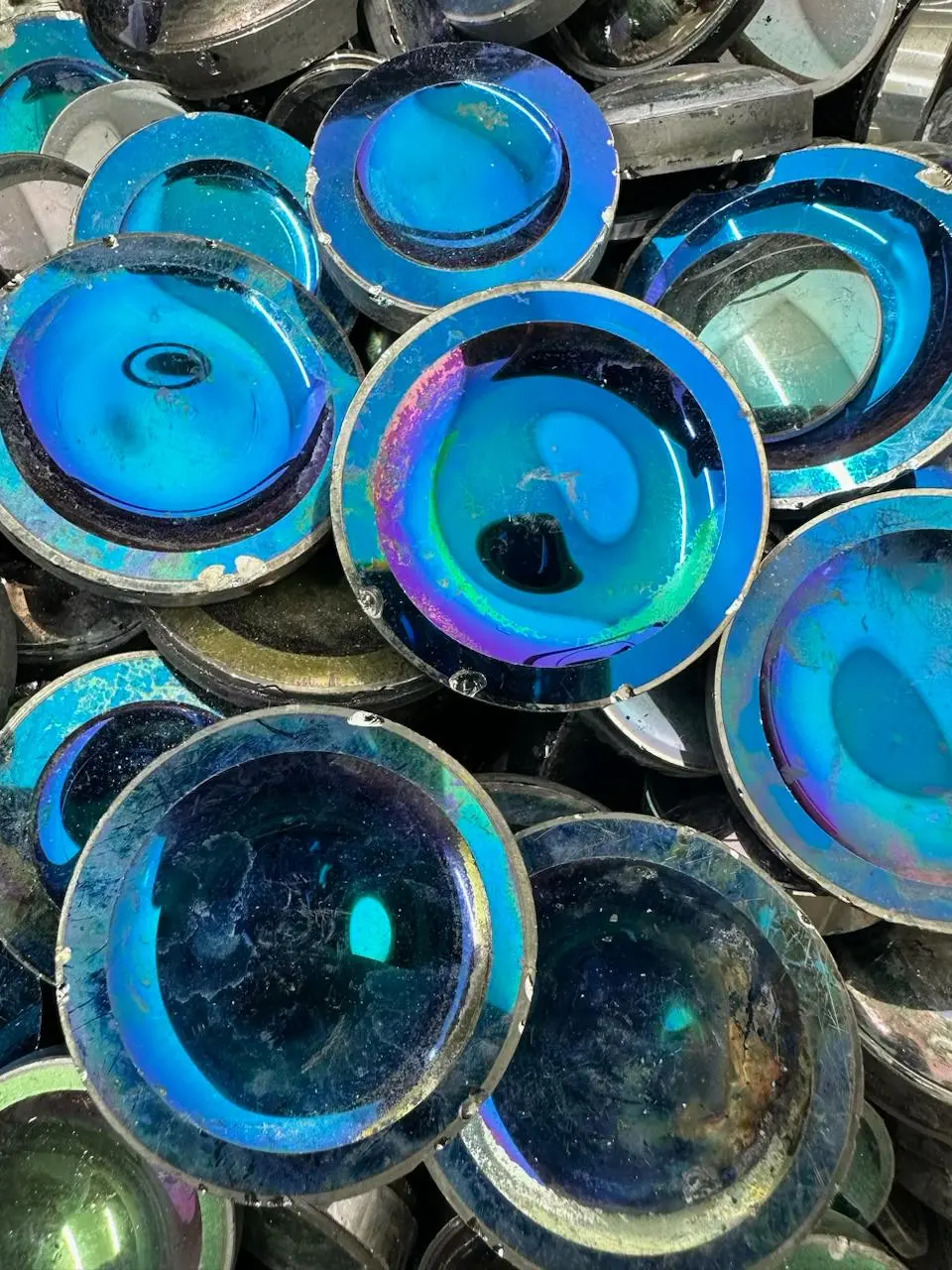

Germanium (Ge) is a crucial material for advanced infrared (IR) optical systems, particularly in the 2-14 micrometer (µm) range, including both Mid-Wave Infrared (MWIR) and Long-Wave Infrared (LWIR) applications. Its ability to efficiently capture and transmit infrared radiation makes it essential for creating detailed thermal images.
Germanium lenses are widely used in security, surveillance, firefighting, industrial inspection, military night vision systems, medical imaging, and astronomical instruments. They enable clear visibility in challenging conditions like darkness, smoke, or fog, making them invaluable for night vision and search-and-rescue operations. This prevalence highlights the need for accurate identification of these lenses, especially for maintenance, repair, and upgrades of existing systems.
Accurate lens material identification is crucial for ensuring compatibility, optimizing performance, mitigating risks, and managing costs. Different IR materials have unique properties that affect their suitability for various applications. Misidentification can lead to poor image quality, system failures, or damage to the lens. Germanium, being more expensive and temperature-sensitive, particularly emphasizes the need for correct identification. Operating a germanium lens beyond its thermal limits can lead to complete optical failure, reinforcing the importance of understanding its material composition for operational safety and reliability.
One of the most striking and immediate indicators of a germanium lens is its appearance to the naked eye. It is completely opaque to visible light, often described as possessing a "silvery-white" or "silvery-grey" metallic luster , leading to its common description as resembling a "black mirror". This characteristic is a direct consequence of its complete impermeability to ultraviolet (UV) and visible light, while simultaneously exhibiting high transparency to infrared radiation.
Unlike common optical glasses or even some other IR materials, such as zinc selenide (ZnSe) or calcium fluoride (CaF2), which are transparent to visible light, germanium's opacity in this spectrum is a key differentiator. This property also enables it to naturally function as a long-pass filter, effectively blocking wavelengths below approximately 2µm. The "black mirror" appearance is not merely a superficial visual cue; it is a direct consequence of germanium's fundamental electronic band structure as a semiconductor. This bandgap dictates its absorption characteristics across the electromagnetic spectrum: it efficiently absorbs higher-energy visible photons, preventing their transmission, while allowing lower-energy infrared photons to pass through. This fundamental property makes germanium inherently suitable for IR applications where visible light interference is undesirable, such as thermal imaging in daylight, night vision, or specific spectroscopic analyses focusing solely on IR signals. Its function as a natural "long-pass filter" simplifies optical designs by often eliminating the need for separate visible-blocking filters, thereby directly linking its physical appearance to its functional utility.
Germanium is a very dense material (5.33 g/cm³), significantly heavier than typical optical glass or even silicon. A germanium lens will feel noticeably heavier for its size compared to lenses made from other materials.
Germanium lenses are specifically designed for infrared applications, particularly in the mid-wave infrared and long-wave infrared ranges (typically 2 to 14 micrometers or even up to 23 micrometers). If the lens is part of a thermal imaging camera, night vision device, or an IR spectroscopy system, there's a high probability it's germanium
Germanium is valued for its unique optical properties in the infrared spectrum, making it a worthwhile choice despite the associated trouble and expense. One of its standout features is its exceptional ability to transmit infrared light, particularly within the 2 to 14 micrometer range, which encompasses the medium-wave infrared and long-wave infrared regions. This capability is essential for effectively detecting and "seeing" heat. Additionally, germanium possesses a high refractive index of around 4.0, which allows it to bend light efficiently, enabling the creation of powerful and compact optical designs. Moreover, its low dispersion characteristics ensure that infrared light remains focused and clear, resulting in crisp thermal images. These attributes collectively make germanium a prime choice for infrared applications.
While germanium is fundamentally a semiconductor, and electrical tests, such as measuring forward voltage drop or reverse leakage current, are effective for distinguishing elemental germanium diodes from silicon or Schottky diodes, these methods are generally not applicable or practical for finished optical lenses. Lenses are typically designed to be optically pure and electrically insulating, or they may have specific coatings that would interfere with accurate electrical conductivity measurements. It is crucial to differentiate between elemental germanium as a semiconductor material used in electronics and its highly specialized application as an optical component. The properties optimized for optical transmission are distinct from those for electrical conduction. Therefore, attempting to use electrical tests designed for semiconductor devices on an optical lens would likely yield inconclusive or misleading results, and could potentially damage the lens or the testing equipment.
Accurately identifying germanium lenses is crucial for technical professionals involved in the design, maintenance, and operation of infrared optical systems. The distinct properties of germanium its complete opacity to visible light, significant density, specific hardness and brittleness characteristics, and unique thermal sensitivity provide a robust basis for identification.
The "black mirror" appearance, coupled with a noticeable weight for its size, offers a strong preliminary indication. The common presence of highly durable coatings, particularly DLC, further supports this identification by reflecting engineering solutions to germanium's inherent material properties. The most definitive non-destructive method involves verifying its broad infrared transmission using a simple IR source and detector, which directly confirms its functional suitability for thermal imaging applications. Ultimately, observing the lens's performance within a functional thermal imaging system provides real-world validation of its material and operational integrity. While electrical tests are valuable for germanium in its semiconductor device form, they are not suitable for identifying finished optical lenses. By leveraging these specific physical and optical characteristics through a combination of visual, tactile, and simple optical tests, professionals can reliably identify germanium lenses, ensuring proper handling, application, and maintenance in critical infrared technologies.
For reliable sourcing and sustainable recycling of germanium optics, Quest Metals is your trusted partner. We specialize in the recovery and refining of germanium and other critical materials, supporting high-tech industries with responsible solutions and a secure supply chain.